Getting your video to rank on YouTube takes more than just an amazingly crafted video.
Here are 10 things to do to get you started on YouTube SEO.

Picture this.
You’ve spent hours recording video for your YouTube channel, doing multiple takes to ensure perfection.
You’ve spent a ton of money on your video scriptwriter and video editor.
The finished result is awesome.
You know YouTube viewers will adore it.
Excitedly, you publish it on your channel and wait.
Nothing happens.
What’s going on?
Why aren’t people finding your video, enjoying it, and subscribing to you by the thousand?
The answer is simple: you’ve skipped YouTube SEO.
Here are 10 best practices that’ll turn things around.
These 10 things are super simple, and will only take you a few minutes.
1. Find the Right Keywords
Paid keyword research tools can give you powerful insights into the best keywords to optimize your videos with.
A great keyword research tool that is YouTube specific is vidIQ.
You’ll get to see all kinds of statistics with this tool – including trending videos, related terms, and more.
For serious YouTubers, this is the best SEO tool to use.
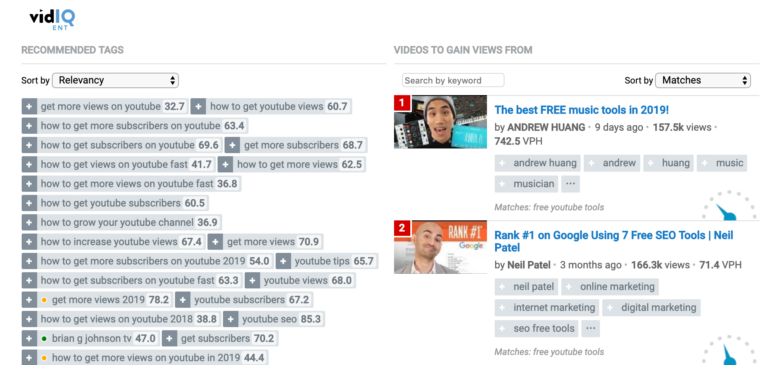
But if you aren’t ready to shell out the $39 per month for a paid subscription to vidIQ yet, there’s an easier way to get in.
Simply head over to YouTube and start typing an industry-specific keyword into the search field at the top of the page.
For instance, if you’re into content marketing, type that into the search field.
What you’ll get is a list of keyword suggestions related to your search.
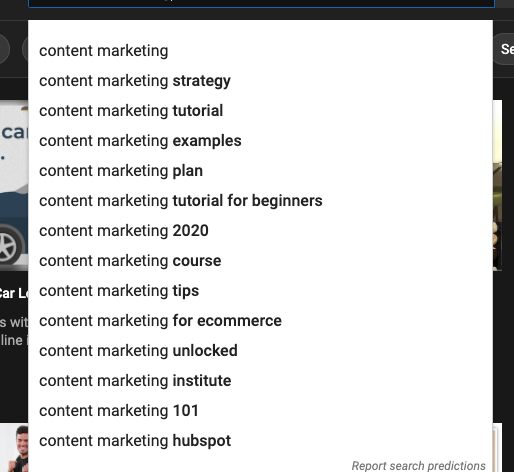
What’s great about this list is that it’s made out of terms people on YouTube actually use.
Take out your pen (or open your notes app) and jot down all these suggestions.
Then, go back to the search field and add an extra word to your keyword.
For instance, “content marketing for.”
The results you get will be different.
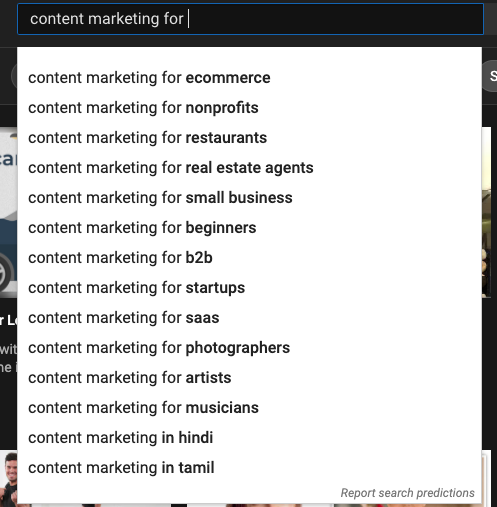
Use your imagination.
Type in variations of your keywords and write down all the suggestions.
What you’ll end up with is a huge list you can refine later.
2. Find Your Competitors’ Most Popular Videos
Your competitor is catering to a similar audience as yours, which means it’s a great idea to see which videos their audience loved.
To find out, visit your competitor’s page and click Sort by in the right corner above their videos.
Choose Most popular.
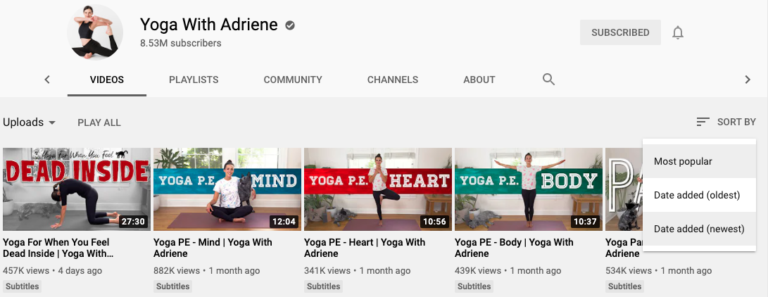
Check out their most popular videos, and figure out which keywords they used to optimize them with.
For instance, here’s Adrienne’s #1 most popular video.
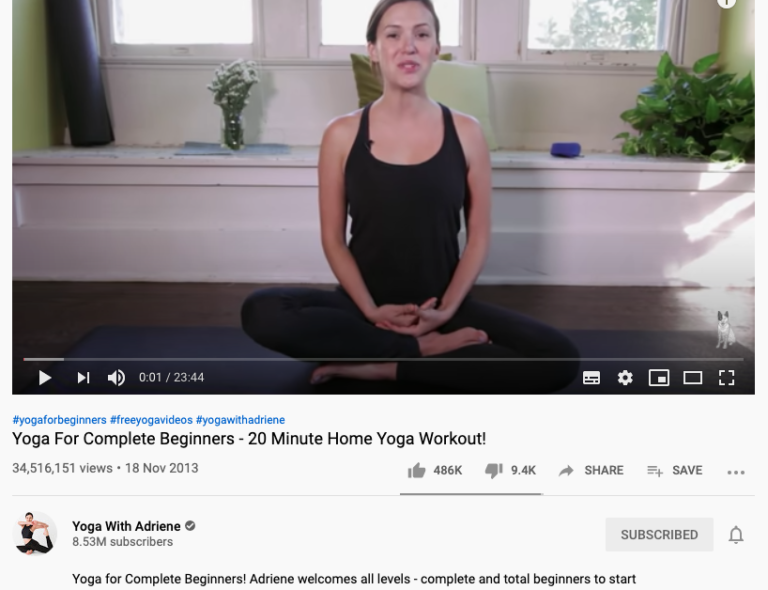
From her title and description, we can guess the keyword she chose was “yoga for complete beginners.”
3. Make Sure Your Keywords Are Low Competition
If your YouTube channel is new, you don’t want to go up against giants who already have a hundred thousand followers.
To avoid this, make sure your keywords aren’t hard to rank for.
One way to do this is to use a tool like KWFinder.
Let’s say you chose the keyword “content marketing for nonprofits.”
Plug it into the KWFinder search field, and you’ll see that its keyword difficulty score is 31 (a great score, since you want to go for a number below 40).

If you aren’t subscribed to a paid keyword research tool, you can go to Google and guess which keywords have high or low difficulty scores.
All you need to do is type your keyword into the search field and note how many results it brings up.
For instance, let’s try “content marketing.”

Ooops!
Two billion results are way too high, which means there’s too much competition for that keyword.
Try another keyword.

Great! Much less competition.
4. Optimize Your Videos for Google Search
Ever do a Google search and get a video as the #1 result?
I bet you have.
For instance, if you type “how to cook pasta” into Google, you get this.
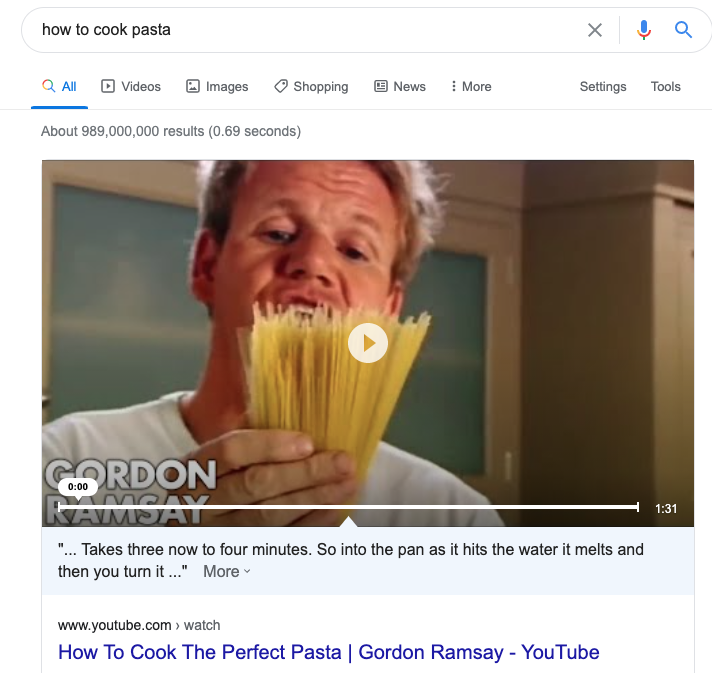
The key is to optimize for Google using keywords that already have YouTube video results.
This is because Google chooses to rank video in its search results for certain keywords (not all).
So, if your video is a review, a tutorial, or anything related to sports, go ahead and optimize it for Google search.
5. Optimize Your YouTube Video Like You Would a Blog
What do you do when optimizing your blogs for search?
Simple: add your keyword in the title, subheads, body, and meta description.
It’s not that much different with YouTube videos.
Here are three places you should use your keyword:
Your video title. Place your keyword as close to the beginning of your title as possible. Like this.
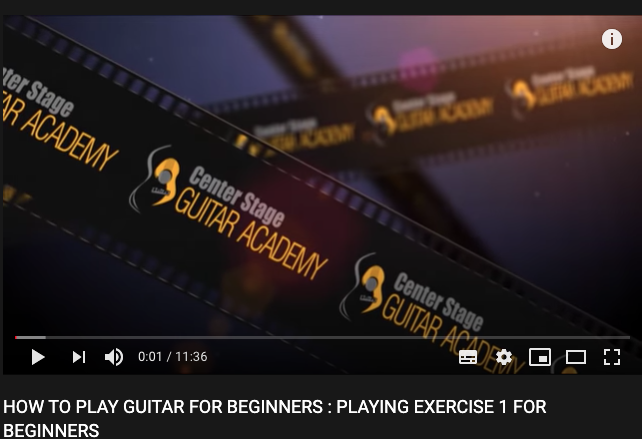
Your video description. Your description is like your main H2. Like you did in the title, mention your keyword as close to the beginning as possible.
Your video tags. From the menu on the left, select “videos” and choose the video you want to add tags to. Add your tags, focusing on your keyword.
6. Magnetize Watchers with Your Videos
According to YouTube, audience retention is a HUGE ranking factor on the platform.
What does audience retention mean?
It means people love your videos enough to watch them to the end.
When this happens, it sends a signal to YouTube telling it your video is great. As a result, your chances of showing up in Search and Suggested locations increases.
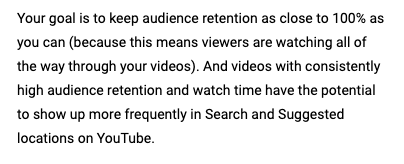
So, how do you get watchers to stay until the end of your videos?
Entertain them, of course.
Here are three tips to help you out:
Let Watchers Know They’re in the Right Place
At the beginning of your video, give viewers a quick rundown of everything you’ll be covering.
For instance, if you’re showing them 10 tips for rock hard abs, telling them so will make them stay until your last point.
Skip the Long Intro
Your viewers clicked on your video for a reason, and it’s not to get to know you or how you’re feeling today. They want to solve a problem, get a question answered, or enjoy some entertainment.
So, skip the long speeches about yourself.
Jump right into the meat of your content as soon as you can.
Keep Watchers Curious
In the middle of your video, give readers a glimpse of what’s coming later.
Make them curious.
For instance, you can say, “In a bit, I’ll let you in on the #1 secret I learned about rock hard abs. It’s not what you expect!”
7. Encourage Watchers to Comment on Your Video
Let me ask you something.
When was the last time you commented on a YouTube video?
If you think back, you can still probably remember which video it was.
And let me guess: it was a video you loved.
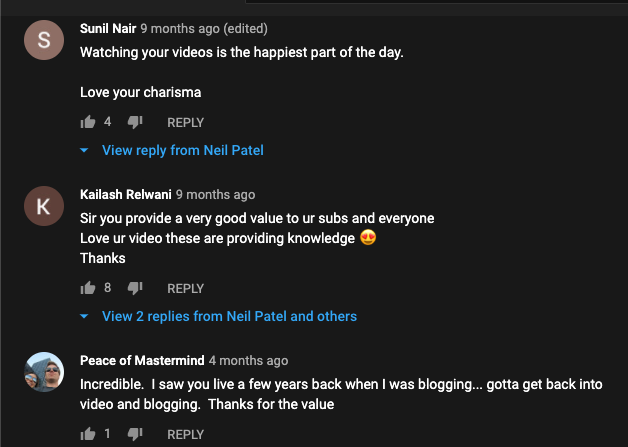
Now, here’s the thing.
Comments are important.
When people leave comments on your video, they’re not just making you happy…
“they’re also telling YouTube your content is amazing.
So, encourage them to comment.
Don’t just tell them to comment. Saying “please leave your comments below!” isn’t enough. Make people want to comment. For instance, you can ask them to share their experience or give their own advice on your topic.
Make sure each video accomplishes one goal. It doesn’t have to be an elaborate goal. It can be “make my viewer smile,” or “teach my viewer how to play the B chord on the guitar.”
End your video on a high note. The end is the most important part of your video. It’s when watchers decide whether or not to comment. To increase chances that they’ll leave one, make them feel awesome. End with encouragement. If they came to learn how to get rock hard abs, tell them you’re 100% sure they can do it.
8. Say Your Target Keyword in Your Video
Yup!
YouTube makes an automatic script of your video.
This means if you say your keyword in your video, they’ll notice.
9. Promote Your Videos Everywhere
Optimizing a YouTube video is just like optimizing a blog post.
The more eyes on your content, the higher your chances of ranking!
So, go all out with promoting your videos.
For example, get on Quora and link to your video to answer related questions. Of course, don’t spam. Mention your video when it solves a problem or sheds light on a topic.
You can also link to your videos in your blog, in your emails, and in your social media posts.
The more views you can pull for each video, the better!
10. Optimize Your Channel’s Page
Optimize your channel page well, and you’ll increase its chances of showing up on YouTube’s search results.
Like this.

When your channel shows up here, you’ll get more views, more subscribers, and even better YouTube rankings.
So, how do you optimize your channel page?
Make it look amazing.
Describe what you do with targeted keywords.
Here’s an example of a beautifully-optimized channel page…
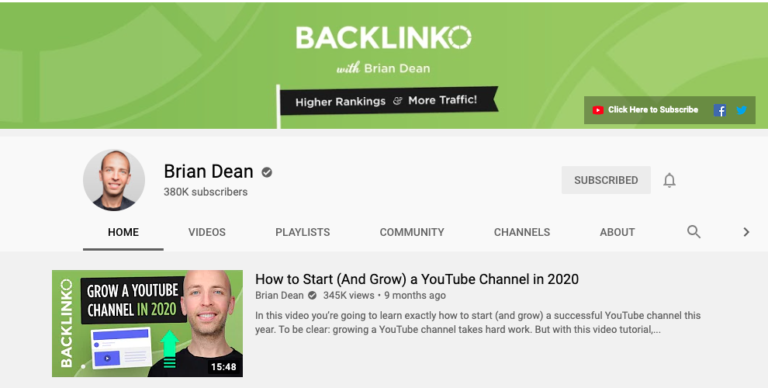
…and channel description.
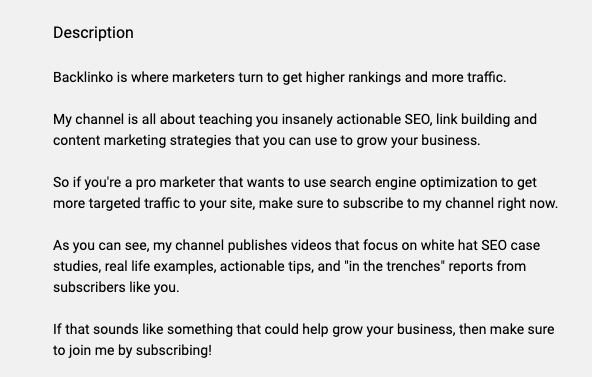
Optimizing Your YouTube Video for SEO Isn’t as Hard as it Seems
There are more than 2 billion YouTube users, which means you shouldn’t neglect this huge platform when marketing your brand.
The great news?
It isn’t that hard.
The key is to know what your audience wants and create content they’ll love, watch to the end, and comment on.
Then, do a few tweaks with your keywords and share your videos.
You’ll see amazing results.
VIA: SearchEngine Journal




